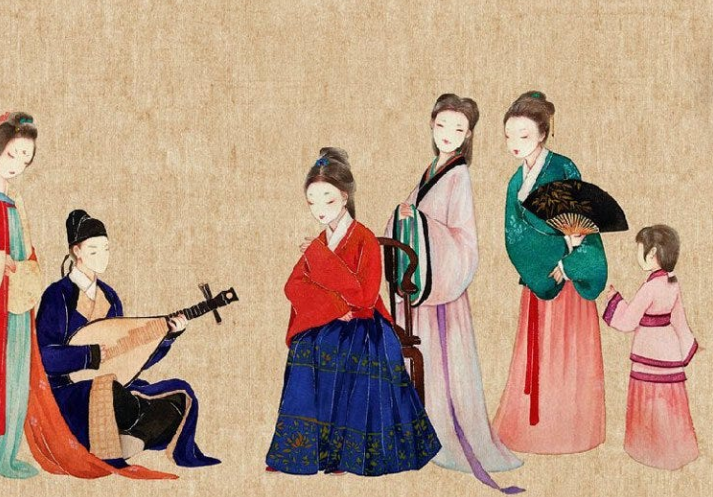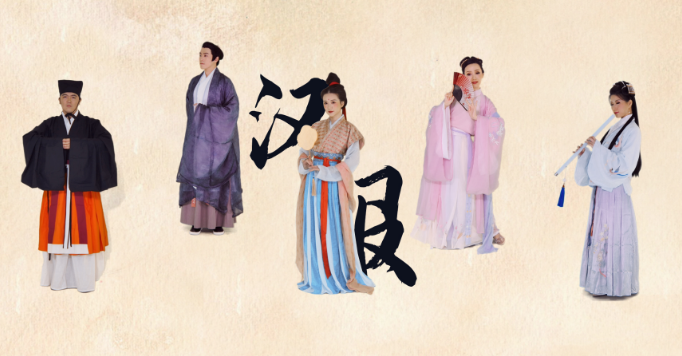Hanfu inspiration comes from ancient Chinese rituals, natural symbolism, dynastic styles, neighboring nomadic peoples, and Central Asian influences through the Silk Road.
Origins of Hanfu Inspiration
The inspiration behind Hanfu, the traditional clothing of the Han Chinese, traces its roots back to the depths of Chinese history and culture. This attire reflects a blend of aesthetic preferences, societal norms, and philosophical beliefs deeply embedded in the Chinese way of life.
Influence from Ancient Rituals and Ceremonies
Hanfu draws significant inspiration from ancient Chinese rituals and ceremonies. These events, often steeped in Confucian ideology, showcased garments that symbolized social hierarchy and moral values. For instance, during the Zhou Dynasty, clothing color indicated rank, with the emperor wearing yellow, symbolizing the earth. These ceremonial garments have influenced Hanfu designs, emphasizing respect for tradition and social order.

Natural Elements and Their Symbolic Meanings
The use of natural elements in Hanfu goes beyond mere decoration. Each element carries a specific symbolic meaning, reflecting the Chinese philosophical outlook. For example, the use of dragon motifs, often linked to the emperor, represents power and authority. The use of lotus flowers symbolizes purity and enlightenment, drawing from Buddhist influences. These natural elements are not just ornamental but are deeply intertwined with the cultural fabric and ethos of the Chinese people.
Dynastic Styles
Hanfu evolved significantly from the Shang Dynasty through to the Ming Dynasty, each period adding unique elements to its style. The Shang Dynasty introduced silk as a primary material, revolutionizing clothing with its luxurious texture and sheen. The Tang Dynasty is renowned for its vibrant colors and wide sleeves, reflecting a cosmopolitan society open to external influences. The Ming Dynasty, meanwhile, saw the standardization of Hanfu, with the introduction of garments like the round-collared robe, which became a symbol of traditional Chinese attire. Each dynasty’s contribution reflects the changing tastes, technologies, and philosophies of the time, creating a rich tapestry of styles and influences that define Hanfu today.
The evolution of Hanfu showcases a journey through China’s rich history, mirroring the nation’s cultural shifts and technological advancements. It stands as a testament to the enduring legacy of Chinese culture and its profound impact on clothing styles and design principles.
Artistic and Cultural Influences
The richness of Hanfu is not only a testament to its aesthetic value but also a reflection of the profound artistic and cultural influences that shaped it. This traditional attire encapsulates the essence of Chinese artistry and philosophical thought, drawing from various aspects of China’s rich cultural heritage.
Traditional Chinese Paintings and Calligraphy
Hanfu often mirrors the elegance and simplicity found in traditional Chinese paintings and calligraphy. Artists in ancient China pursued harmony between nature and humanity, a concept clearly visible in Hanfu designs. The flowing lines and graceful forms of calligraphy, for instance, inspire the smooth silhouettes and fabric draping in Hanfu. Paintings depicting scenes of nature, with their subtle color palettes, influence the color choices and patterns in traditional Hanfu garments, creating a visual representation of the natural world.
Folklore and Mythology
Chinese folklore and mythology also play a significant role in shaping Hanfu. Legendary figures, mythical creatures, and epic stories often find their way into the intricate embroidery and motifs of Hanfu. For example, the phoenix, a symbol of grace and virtue, is a popular motif in women’s Hanfu, representing femininity and elegance. Similarly, the dragon, a symbol of power and strength, often adorns men’s garments. These mythological elements add a layer of cultural significance and storytelling to Hanfu, making it not just a piece of clothing but a canvas of cultural lore.
Confucianism and Taoist Philosophies
The philosophies of Confucianism and Taoism have profoundly influenced Hanfu. Confucianism, with its emphasis on ritual, order, and hierarchy, is reflected in the structured and modest designs of Hanfu, advocating a balance between beauty and propriety. Taoism, which promotes harmony with nature, influences the use of natural fabrics and colors in Hanfu, aligning the wearer with the natural world. These philosophical underpinnings ensure that Hanfu is more than just attire; it is a manifestation of deeply held beliefs and values.
Hanfu, is not merely a style of dress but a vibrant tapestry woven from the threads of China’s artistic, cultural, and philosophical traditions. It stands as a symbol of China’s historical legacy, a legacy that continues to influence and inspire the world of fashion and culture.
Geographical and Ethnic Contributions
The diverse geographical landscapes and ethnic mosaic of China have significantly shaped the evolution of Hanfu, contributing to its rich variety and cultural depth. This traditional attire not only reflects the aesthetic sensibilities of the Han people but also embodies the influences from various regions and ethnic groups within China.
Northern and Southern Dynasties Styles
The Northern and Southern Dynasties period was a time of significant cultural divergence and synthesis in China, which greatly influenced Hanfu styles. In the north, under the influence of nomadic cultures, Hanfu adopted more practical and warmer designs, suitable for the colder climate and equestrian lifestyle. These garments were typically more streamlined and less elaborate. In contrast, the south, with its warmer climate and more settled lifestyle, favored more elaborate, flowing Hanfu styles. This period saw the emergence of wide sleeves and flowing robes, reflecting the south’s more leisurely and artistic lifestyle.
Minority Ethnicities and Border Cultures
The border regions of China, home to various minority ethnicities, have also contributed to the Hanfu tapestry. These cultures, with their unique textile patterns, embroidery techniques, and garment styles, have infused Hanfu with a richness and diversity that is unparalleled. For instance, the use of bright colors and intricate patterns in the attire of the Miao people has influenced Hanfu designs, particularly in terms of embroidery and decorative techniques.
Silk Road and Foreign Trade Impact
The Silk Road, an ancient network of trade routes, played a crucial role in introducing new fabrics, designs, and styles to China, which were subsequently absorbed into Hanfu. This interaction with different cultures brought about a fusion of styles, as seen in the incorporation of Persian and Central Asian motifs into Hanfu during the Tang Dynasty. The influence of foreign trade is evident in the use of luxurious materials like silk and brocade, which became symbols of wealth and status in Chinese society.
In conclusion, the geographical and ethnic diversity of China, along with its interactions with other cultures through trade, has enriched Hanfu, making it a symbol of China’s historical and cultural legacy. This traditional attire is not just a representation of the Han people but a mosaic of the various cultures and influences that have shaped China over the centuries.

Technological and Material Innovations
The evolution of Hanfu is deeply intertwined with technological and material innovations in ancient China. These advancements not only enhanced the quality and aesthetics of Hanfu but also reflected the ingenuity and creativity of Chinese textile artisans.
Silk Weaving Techniques
Silk weaving, a cornerstone of Chinese textile technology, significantly influenced Hanfu. Ancient weavers developed complex techniques such as damask and brocade, creating fabrics with intricate patterns that could only be seen under certain light conditions. These techniques allowed for the production of lighter, more durable silk fabrics, ideal for the flowing garments typical of Hanfu. The innovation in silk weaving also led to the creation of dual-tone silks, which changed color when the fabric moved, adding a dynamic visual element to Hanfu.
Dyeing Processes and Color Symbolism
The dyeing processes in ancient China were not only a technical achievement but also carried deep symbolic meanings. Artisans used natural dyes extracted from plants, minerals, and insects, achieving a wide range of vibrant colors. For instance, the use of indigo for blue and madder root for red allowed for the creation of vivid, long-lasting colors in Hanfu. Each color held symbolic significance, with red representing good fortune and joy, and yellow reserved for the emperor, symbolizing his supposed center position in the universe.
Historical Tailoring Methods and Innovations
Historical tailoring methods played a crucial role in the evolution of Hanfu. Tailors employed advanced cutting techniques that minimized fabric waste, reflecting an early form of sustainable fashion. They developed layered clothing styles, allowing for more versatile use of Hanfu across different seasons. Innovations like the use of toggles and loops instead of buttons made garments more adjustable and comfortable, accommodating various body shapes and sizes.
These technological and material innovations not only enhanced the practical aspects of Hanfu but also elevated it to an art form, showcasing the sophistication and skill of ancient Chinese artisans. The legacy of these innovations continues to influence modern fashion, both in China and globally.







